

Donald Trump Voters, Just Hear Me Out. Twitter. Using Design Thinking to Think About Design Thinking. This is long overdue.

No, not this post. I have no guilt about extended lapses between posts. It is overdue because back in 2014, when I interviewed ten Maker experts (MakExperts?) To prepare for my 54th edWebinar, I noticed the similarities between the Stanford Design School's design thinking model and our Barbara Stripling-inspired New Canaan High School inquiry model). At the time, I thought I should spend some time thinking about that alignment. Design Thinking. On dot connecting: sharing your whys, what ifs and innovations. Last week I presented about whys, why nots, what ifs and the nature of innovation.

I crowd-sourced part of the presentation, asking some of the most creative colleagues I know if they could easily connect their whys to their innovations. It turns out that was not a challenge. First: What are your whys? Simon Sinek tells us that great leaders know their whys. People don’t buy what you do, they buy why you do it. If you know your whys, then decision about whether to pursue an innovative course of action is far easier to make. Workshop participants found it truly easy to identify identify the whys of successful companies. When your whys are clear, you seek opportunities to transform. Our mission, of course, is to transform teaching and learning.
EdWebet 97 - Design Thinking (complete) - Google Slides. Bibliotech. Getting Started with Design Thinking. : nchslibraryinfo - Create post. A Virtual Crash Course in Design Thinking. Modern indoor waterpark - Water park. Public Design Thinking Reflection. 45 Design Thinking Resources For Educators. 45 Design Thinking Resources For Educators contributed by opencolleges.edu.au Imagine a world where digital learning platforms help adult learners succeed through college completion.

Where a network of schools offers international-quality education, affordable tuition, and serves hundreds of thousands of children in economically disadvantaged countries; where we engage parents in understanding national trends and topics in education; where a comprehensive learning environment seamlessly connects the classroom with the opportunities of the digital world for young students; and where system-level solutions help more students gain access to college. Beyond controversy: demystifying Design Thinking. This is not the first time that Pentagram partner Natasha Jen has opened up a debate criticizing design thinking.
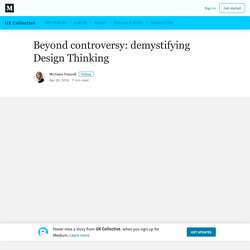
Last year at 99u conf, she started a heated debate in which she called Design Thinking names such as “bullshit,” “jargon” and “extremely dangerous.” Very recently she gave another talk where she stuck to the same arguments and gave it another click-bait-esque headline. Again, through all of the controversy, she succeeded in her mission to start a discussion about Design Thinking. (536) Natasha Jen: Design Thinking is Bullsh*t. EJ1099478 - Design Thinking and the School Library, Knowledge Quest, 2016. This past school year, the author set out to develop lessons that incorporated the design thinking process into her literature exploration curriculum in the school library.
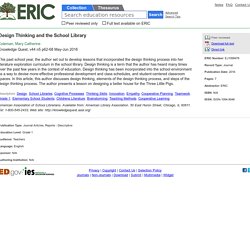
Design thinking is a term that the author has heard many times over the past few years in the context of education. Design Kit. The Field Guide to Human-Centered Design A step-by-step guide that will get you solving problems like a designer.
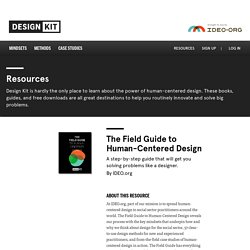
By IDEO.org. Design innovation for social good. DOUBLE DIAMOND – Innovation and entrepreneurship in education. Design - Design Thinking. Austin Center for Design. DEEP design thinking. Brené Brown on Empathy vs. Sympathy. When your loved one shares a painful experience, do you try to lighten the moment?
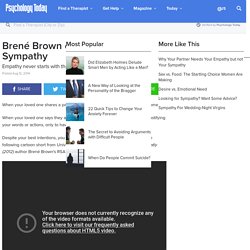
When your loved one says they are upset with you, have you found yourself justifying your words or actions, only to have your partner become more upset? Despite your best intentions, you may be suffering from a lack of empathy. The following cartoon short from University of Houston researcher and Daring Greatly (2012) author Brené Brown's RSA talk in 2013 explains the difference: article continues after advertisement Our brains are wired to run from pain—including emotional pain—whether it is ours or someone else's. Creative Confidence Map. The Simple System For Planning Project Based Learning Experiences. The most successful teaching begins, therefore, with clarity about desired learning outcomes and about the evidence that will show that learning has occurred.
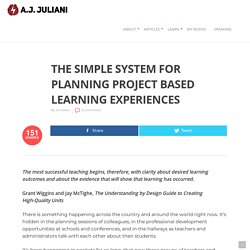
Grant Wiggins and Jay McTighe, The Understanding by Design Guide to Creating High-Quality Units There is something happening across the country and around the world right now. It’s hidden in the planning sessions of colleagues, in the professional development opportunities at schools and conferences, and in the hallways as teachers and administrators talk with each other about their students.
It’s been happening in pockets for so long, that now those groups of teachers and leaders are starting to bring in new teachers and new leaders to build a true culture of learning that looks and feels different. It’s taking shape as a revolution of sorts (but not some type of education reform) that is beginning to make its way into every school and every classroom. PBL is taking over traditional finals and mid-terms as the performance task.
A More Beautiful Question – Warren Berger – Visual Synopsis by Dani Saveker. Connect - ALWAYS INTERESTED LIBRARY & INFO CENTER. Boardthing. Home - Gamestorming. Design Thinking for Educators. Schoollibrarianmindset. Design Thinking for Libraries. Instilling A Growth Mindset In Your Library & Classroom This Month & All Year Long. Our friends at ClassDoJo shared that September is Growth Mindset Month so Brianna and I went on a little investigation ourselves into Growth Mindset.

In a growth mindset, people believe that their most basic abilities can be developed through dedication and hard work....brains and talent are just the starting point. This view creates a love of learning and a resilience that is essential for great accomplishment. Virtually all great people have had these qualities. We were also excited to read this post by Heidi at the Create, Dream, Explore blog.
What a wonderful tie in with Dot Day coming up next week on September 15. As she states, The Dot is great for helping you to instill a growth mindset in your classroom. Here is one new book from Capstone that I would definitely add to my library collection....Fuchsia Fierce by Christianne C. Fushsia takes girl power to a whole new level of fierceness and teaches every reader the importance of self confidence, which is a priceless lesson. Reimagining the Shopping Cart.
Tools, Publications & Resources. ABC Nightline - IDEO Shopping Cart. (536) IDEO Brainstorming Video from IDEO U. Schoollibrarianmindset. Design Thinking, Education & Learning. IDEO's Human Centered Design Process. IDEO is one of the most innovative and award-winning design firms in the world.

They’re like the secret weapon of innovation for companies like Microsoft, Hewlett-Packard, Pepsi, and Samsung, in large part, due to their focus on human centered design. Over the last few decades, they’ve designed hundreds of products, like the first computer mouse for Apple in 1980, the Palm Pilot in 1998, a school system in Peru, and the 25-foot mechanical whale used in the movie Free Willy, just to name a few. But perhaps the most interesting thing about IDEO is that Founder David Kelley doesn’t consider them to be experts in any specific industry or vertical. He says, MindSet: A Book written by Carol Dweck. Teaching a growth mindset creates motivation and productivity in the worlds of business, education, and sports.
Creative Confidence. 10 Models for Design Thinking – Libby Hoffman. In 2004, business consultants Hasso Plattner and David Kelley developed a model that would change the way engineers and designers, and eventually educators, business executives, and social entrepreneurs around the country solved problems — specifically human problems. The Human Centered Design Process- the method to resist methods, as I like to think of it- encourages people to identify and solve problems by doing 3 unintuitive, even counter-cultural, tasks: EmpathizeWork Together, andFail Effectively. Plattner and Kelley popularized the HCD method of problem solving through the development of IDEO, an international product design firm, and the Stanford Design School.
Today companies and organizations across America have adapted the model. The Design Thinking Process. The Design Thinking process first defines the problem and then implements the solutions, always with the needs of the user demographic at the core of concept development. This process focuses on needfinding, understanding, creating, thinking, and doing. At the core of this process is a bias towards action and creation: by creating and testing something, you can continue to learn and improve upon your initial ideas. The design thinking process consists of these 5 steps: EMPATHIZE: Work to fully understand the experience of the user for whom you are designing. 5 Stages in the Design Thinking Process. Creative Confidence. About IDEO. The Launch Cycle – Bring Out the Maker in Every Student. 8 Characteristics of the “Innovator’s Mindset” Recently I explored the notion of the “Innovator’s Mindset”, and have thought a lot about this idea. As I look to write on the topic of “Leading Innovative Change” within schools, we are looking to develop educators as innovators.
To be innovative, you have to look at yourself as an innovator first, and to create schools that embody this mindset as a “culture”, we must develop this in individuals first. Building upon Carol Dweck’s work, I have been looking at the traits of the “Innovator’s Mindset”, which would be summarized as follows: Belief that abilities, intelligence, and talents are developed leading to the creation of new and better ideas. To develop students as “innovators” in their pursuits, we must embody this as educators. Empathetic – To create new and better ways of doing things, we need to first understand who we are creating them for. Stanford d.school's K12 Lab. Can I connect with the K12 Lab? Yes!